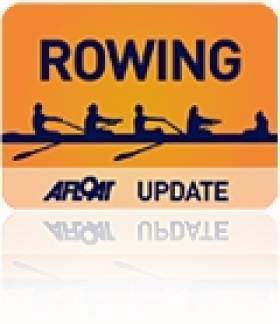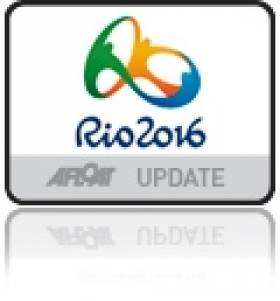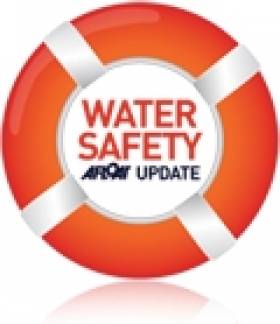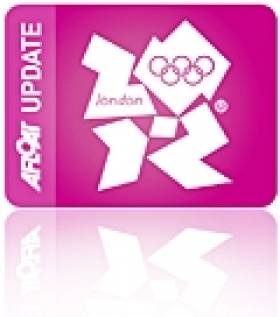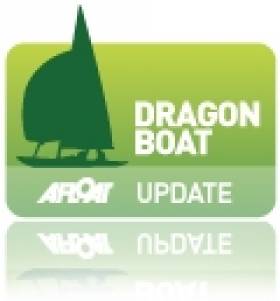Displaying items by tag: Melbourne
Lambe Pulls Out of World Cup Rowing Regatta
#ROWING: Ireland will be without an entry at the World Cup regatta in Sydney this weekend. Claire Lambe, who was entered in the lightweight single sculls, has pulled out because of injury. The Dubliner has hamstring tendinitis. She has been competing with some success for Melbourne University Boat Club but plans to return home to Ireland as planned in the next two weeks.
China, Australia Olympic Teams Dominate ISAF Sailing World Cup Melbourne
#rio – Five Medal Races wrapped up the action at ISAF Sailing World Cup Melbourne with two nations dominating proceedings, Ireland was not represented.
Australia dominated the multihull and skiff fleets whilst China locked out the opposition to take all six podium places in the RS:X.
A strong northerly breeze met athletes at Sandringham Yacht Club for the final day of ISAF Sailing World Cup Melbourne. With gusts over 20 knots there were thrills and spills aplenty on the Stadium course as fans gathered on the Yacht Club balcony to enjoy the spectacle.
Top three by class:
2.4 Metre
1. Paul Francis, NZL
2. Michael Leydon, AUS
3. Matthew Bugg, AUS
470 Men
1.Mathew Belcher / William Ryan
2. Sime Fantela / Igor Marenic, CRO
3. Angus Galloway / Tim Hannah, AUS
470 Women
1. Shasha Chen / Yang Gao, CHN
2. Sasha Ryan / Jaime Ryan, AUS
3. Nan Zhang / Xiao Lv, CHN
49er
1. Nathan Outteridge / Iain Jensen, AUS
2. David Gilmour / Sam Phillips, AUS
3. William Phillips / Rhys Mara, AUS
49erFX
1.Olivia Price / Eliza Solly, AUS
2. Haylee Outteridge / Ella Clark, AUS
3. Ragna Agerup / Maia Agerup, NOR
Finn
1. Bjorn Allansson, SWE
2. Oliver Tweddell, AUS
3. Jake Lilley, AUS
Kiteboarding Men
1. Florian Gruber, GER
2. Riccardo Andrea Leccese, ITA
3. Alejandro Climent Hernandez, ESP
Kiteboarding Women
1. Nuria Goma, ESP
2. Lisa Hickman, AUS
3. Natalie Clarke, AUS
Laser
1. Tom Burton, AUS
2. Thomas Saunders, NZL
3. Matthew Wearn, AUS
Laser Radial
1. Tatiana Drozdovskaya, BLR
2. Dongshuang Zhang, CHN
3. Krystal Weir, AUS
Nacra 17
1.Darren Bundock / Nina Curtis, AUS
2.Euan McNicol / Lucinda Whitty, AUS
3.Jason Waterhouse / Lisa Darmanin, AUS
RS:X Men
1.Chuankun Shi, CHN
2. Chunzhuang Liu, CHN
3. Zhennan Fang, CHN
RS:X Women
1.Manjia Zheng, CHN
2. Qiaoshan Weng, CHN
3. Peina Chen, CHN
SKUD 18
1. Jovin Tan / Desiree Lim, SIN
2. Duncan MacGregor / Liesl Tesch, AUS
3. Amethyst Barnbrook / Brett Pearce
Irish Tourist Drowns in Melbourne
#WATER SAFETY - A 27-year-old Irish tourist had died after drowning in Melbourne, Australia on Tuesday, the Sydney Morning Herald reports.
The tourist and a colleague, who have not yet been named, had reportedly entered the Yarra River in central Melbourne around 9pm intending to swim across. Some minutes later screams were heard from the water.
"At first I thought they were joking, I think most people did," said David Brearley, a barman at the nearby Riverland bar who had warned the pair not to attempt the crossing - but responded to the calls for help and swam out into the river.
Brearley was able to take one man to the shore where he was treated by paramedics. But the other man was lost despite the assistance of other bystanders.
His body was discovered some three hours later floating near a bridge close to the incident.
Paramedic Susie Dean praised Brearley's actions as "absolutely heroic", noting that there is "a very strong current in the Yarra".
The Sydney Morning Herald has more on the story HERE.
Mixed Olympic Results from Melbourne Warm Up
#OLYMPIC SAILING–As the important Olympic sailing Qualifier event in Perth, Australia draws closer Ireland had Laser, Laser Radial and 49er teams competing in Sail Melbourne as a warm up event last week.
49er dinghy men Ryan Seaton and Matthew McGovern took six third places over a series of 14 races to finish fourth in their seven boat fleet.
Dun Laoghaire's Annalise Murphy from the National Yacht Club, a medal hope for Ireland in London next year, was ninth from 25 starters, second being her best individual race score in race eight of here ten race series. She finished eighth in the final medal race.
Belfast Lough's James Espey from Royal Ulster YC made the gold fleet in the Laser class finishing 27th from 32.
Craig Opens Dragon Worlds with 19th
Craig, of the Royal St. George in Dun Laoghaire, rounded the first mark in the middle of the 73-boat fleet but managed to gain places on each leg of the windward leeward course to finish 19th. Racing continues this week. More HERE.


























